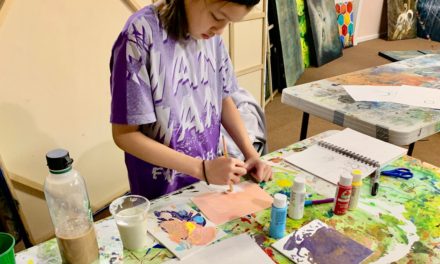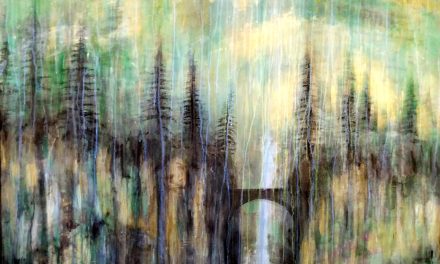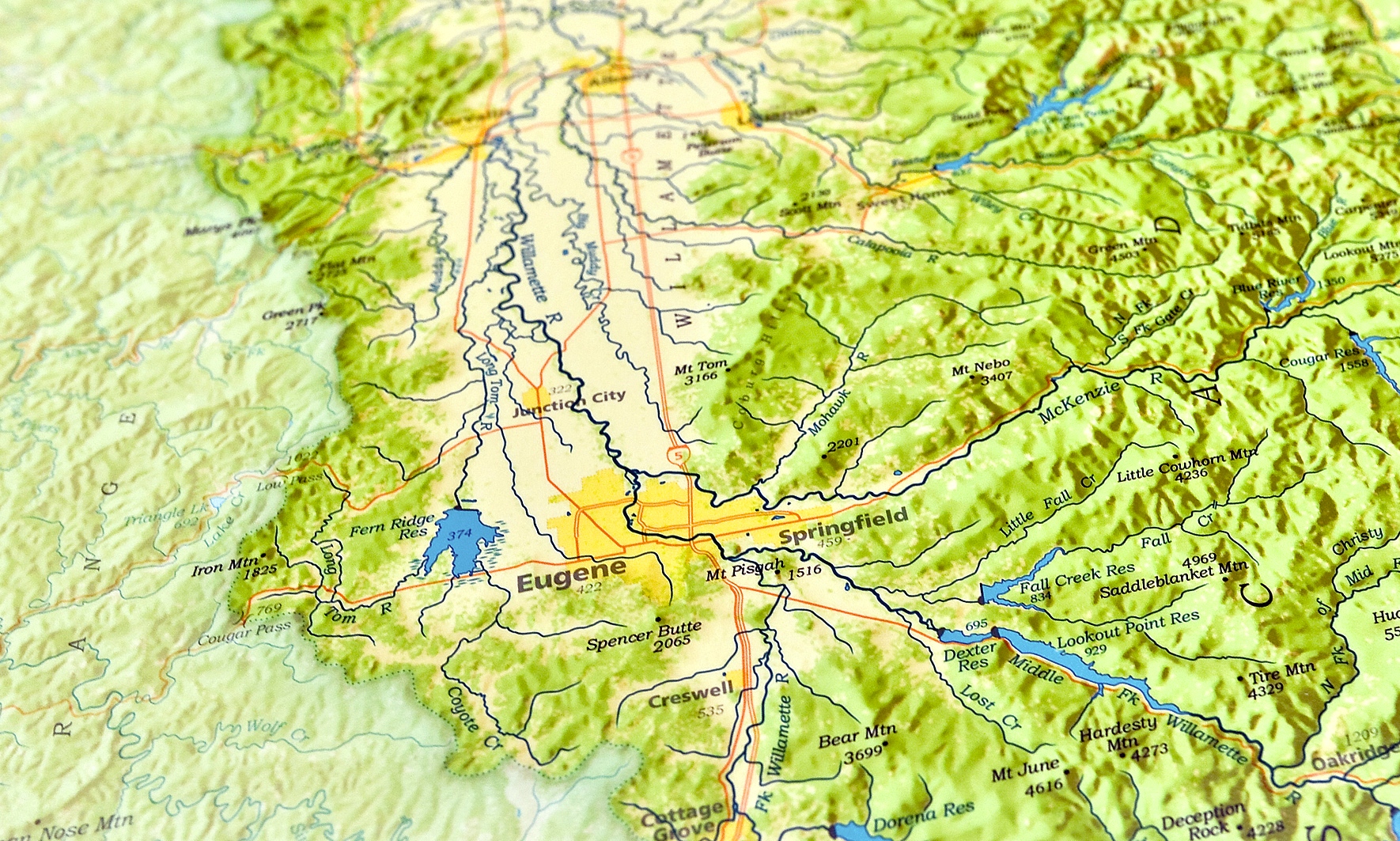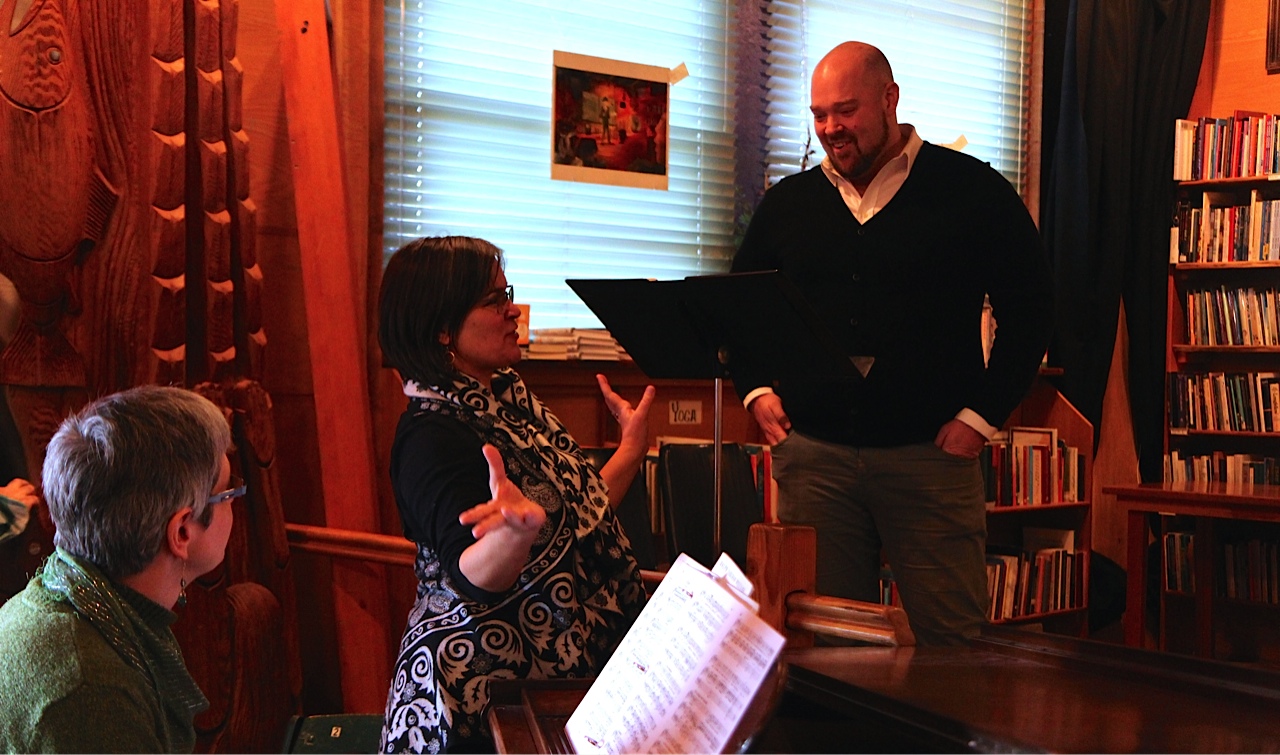(Above: Olga Volchkova’s The Holy Assembly of Borsch pays homage to one of the classic dishes of Old Russia, which she portrays in the style of ancient iconography.)
By Randi Bjornstad
“This artist is so popular, she can’t fit everyone in who wants to show her work,” Karin Clarke enthused as she talked about the show of recent creations by painter Olga Volchkova, on display now at the Karin Clarke Gallery through Nov. 26.
It’s titled Icons of Nature, and besides being exquisite in concept, it’s equally exquisite in execution.
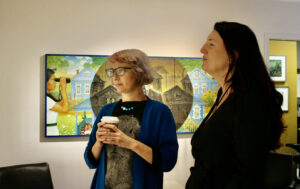
Artist Olga Volchkova, left, and gallerist Karin Clarke take a walk through the Icons in Nature exhibit.
Volchkova, who grew up in the Soviet Union where she developed her affinity for the painted icons of Russian Orthodox saints that date back as far as the 10th century, has expanded the idea of sainthood to celebrate the wonders and qualities of a variety of plants by coupling their botanic properties with human personalities.
Her first show at the Karin Clarke Gallery was nearly four years ago now, and at that time she acknowledged that some might consider her choice of subjects quirky, if not sacriligious, because they portray characters that are not offically designated religious saints.
“I think in Russia it might be a common opinion that I shouldn’t do this, Volchkova acknowledged back then. “But I think I am honoring nature, so I do not think it is a problem. I try not to even think about that possible complaint — I feel no guilt.”
For example, in this new show, The Holy Assembly of Borsh celebrates autumn as a time when the crops have been harvested and people gather to share food.
“It’s my idea of a good time,” she said. “It brings people together around a beautiful table to share good food that they have made together.”
This painting includes a scroll honoring the main ingredients of the traditional soup — porcini (mushroom) broth, beet, carrot, cabbage, tomato, potato, onion, celery, garlic, bay leaf, parsley, and dill — that is a staple among Slavic cultures, although Ukraine is considered by many to be its area of origin.
Another of her creations is a triptych of three saintly sisters: saints Corn, Squash, and Bean, which people in many parts of the world grow together because they complement each other — the squash wards off slugs and snails, while beans produce nitrogen, and the corn grows tall as a trellis for the others, with people reaping the health benefits of harvesting all three.
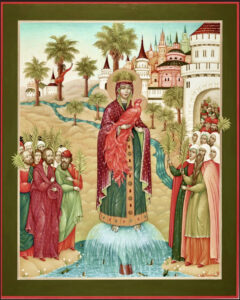
Unlike most historical icon painters, Volchkova’s iconography frequently features women as her subjects.
Volchkova reveres plants for their simplicity as well as their necessity to sustain all life.
“We go from space to the deepest ocean, but everything on the surface of our planet has a little machine inside it,” she said. “These machines are always working for our advantage.”
One noticeable aspect of Volchkova’s work is her inclusion of many women as iconic subjects.
“In most religions, there always seems to be a male figure, who always has a son,” she said, “But my purpose is to have mothers and daughters — I want to fill this gap.”
Even her painting methods reflect the importance of plants to human existence and quality. In a 2019 Eugene Scene article, Volchkova described some of her plant-related technique, including making her own gesso, using “a chalky white paint mixture often used to coat wood before painting — by cooking gelatin, chalk, garlic juice, and honey “to prevent bacteria from growing on it.”
With its emphasis on plants and their benefit to human existence, some of her iconography is beginning to incorporate more political ideas, she acknowledged.
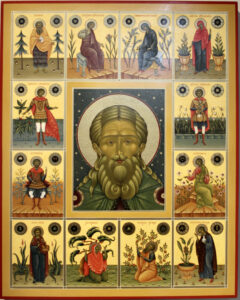
The Holy Spirit of Herbs shows some of the many plants that have provided medical benefits for human ailments through history.
“Plants are very powerful, but they also are fragile and easily damaged by society, and they must be protected from destruction,” she said. “Everywhere in the world, we can see the changes that are happening that are destroying forests and farming, and that also has a devastating effect on climate and the future of humanity.”
On a more hopeful theme, Volchkova also stresses the important link through the centuries, documenting in a piece called Plants and Science another way, besides food, in which plants have helped humans to survive.
A painting titled The Holy Spirit of Herbs documents myriad plants that have been the source of balms and cures for many human ailments. These medicines include usnea, ginger, rosemary, sage, garlic, echinacea, turmeric, Oregon grape, juniper, aloe vera, wormwood, and golden seal.
Icons of Nature at the Karin Clarke Gallery
When: Through Nov. 26, 2022
Where: Karin Clarke Gallery, 760 Willamette St., Eugene
Hours: Noon to 5:30 p.m. Wednesday through Friday; 10 a.m. to 4 p.m. Saturday
Information: 541-684-7963 or karinclarkegallery.com


